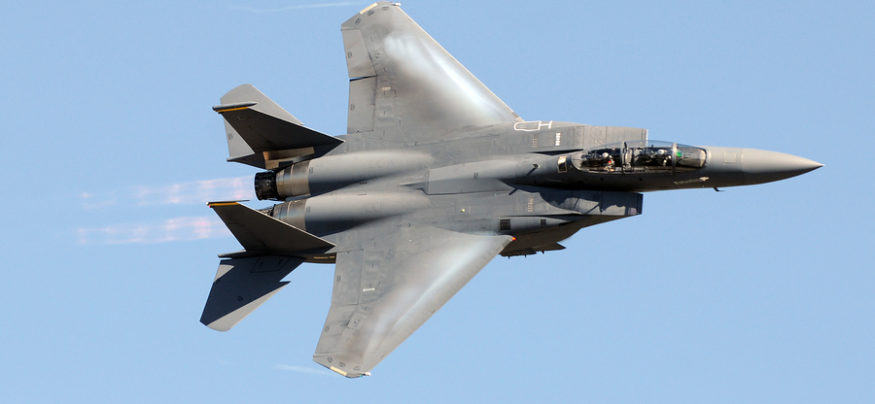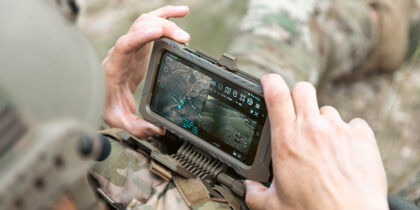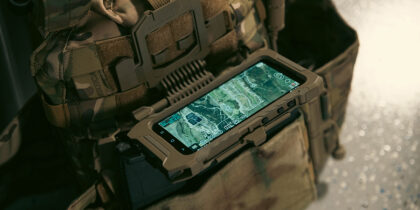5G has the power to transform U.S. Air Force operations, significantly enhance readiness and enable new mission capabilities like never before. As Todd Wieser, CTO, Special Operations Command, U.S. Air Force stated in an interview earlier this year, “Mobile is the future; it’s where we’re going.”
In particular, 5G is setting a foundation for driving new mobile innovation in the form of connected solutions — from speeding “smart” connectivity to providing massive bandwidth to drive advanced data analytics insights. “Our focus tends to be how we take the combat warfighter capability and make those mobile,” Weiser explained. “Things that you might have heard of like Android [Tactical] Assault Kit and Battlefield Airmen kits. These are all things that leverage mobile technology in a new way.” For example, forces are using mobile communications and geospatial functionality to increase situational awareness, collaborate in real-time and enhance mission command capabilities.
But 5G network capabilities will not just enhance applications like those mentioned by Wieser; they will open up new seamless mobile mission capabilities never seen before. The development of 5G-powered connected military bases has the potential to both enhance operations and drive new levels of combat readiness — all while streamlining costs.
One area of particular opportunity for Air Force to further enhance operations is improving supply chain visibility and asset management. “The reality is … we’re mobile ‘lite.’ … We’ve got to move ourselves from a 20th-century, network-centric kind of role, which is what we live in, to a 21st-century, data-centric infrastructure,” said USAF Maj. Gen. Cedric George, deputy director of resource integration and logistics CIO. Using small sensors or tracking devices, IT can use mobile devices to verify the security and integrity of the Air Force supply chain, pinpoint assets around the world or even monitor the health of workers.
Digitize Your Government Agency
Get your free guide to digital transformation for government agencies. Download Now
5G networks will also underpin advanced mobile applications in and around the cockpit. Flight line operations and maintenance teams can leverage secure tablets within a secure 5G environment to view real-time inventory and schematics, better utilize spare parts, manage aircraft diagnostics solutions and more. Air Force could advance projects around Electronic Flight Bags (EFBs) and Electronic Knee Boards (EKB) to minimize or eliminate paper use in cockpits and bring down fuel costs. The safety and cost benefits of these types of mobile solutions add up: “For every pound of weight removed from the aircraft, you save a certain amount of fuel on a given sortie. For instance, if you remove 120 pounds of paper from every single sortie, we calculated the command would save about $780,000 per year in fuel cost within the mobility air forces,” outlined Richard Quidgeon, AMC electronic flight bag requirements manager, in a 2017 release.
But new applications in an era of higher-speed network capabilities also raises security concerns. Network endpoints in the form of sensors and devices are creating a wider digital surface area for cyber adversaries to attack. “We do have a big perceived security barrier in adopting some of the mobile technology. … There are parts of the Air Force that are looking at that and there are parts of the Air Force that have completely solved that problem and adopted it through their mission area. It’s just that we’ve solved this problem in pockets and not for everyone,” said Lauren Knausenberger, director, cyberspace innovation at the U.S. Air Force.
Major efforts are already underway to implement security strategies and policies to protect vital mission data, and 5G could ease that path. “We need to discuss now what 5G lets us do differently with regard to security,” said former DOD CIO Terry Halvorsen, who is now the EVP and CIO of the mobile IT and mobile B2B group at Samsung Electronics America. In addition to delivering higher levels of encryption, organizations can protect their devices today with existing mobile solutions such as Samsung Knox, the company’s defense-grade security platform. But as Halvorsen adds, we need to continually push forward and address the evolving threat landscape by asking, “What new security techniques could 5G allow us to implement?”
5G’s promise is about enabling the Air Force to deploy real solutions that can bring to life a new vision of what’s possible within the department’s environment. Samsung’s strategy goes far beyond just faster devices for pilots or maintenance crew; it’s about powering a more connected military that can take advantage of new AI, IoT and cloud-based solutions that will transform mission outcomes for our forces in the office or on the front lines.
Discover how Samsung’s government technology solutions can assist agencies with their digital transformation.








